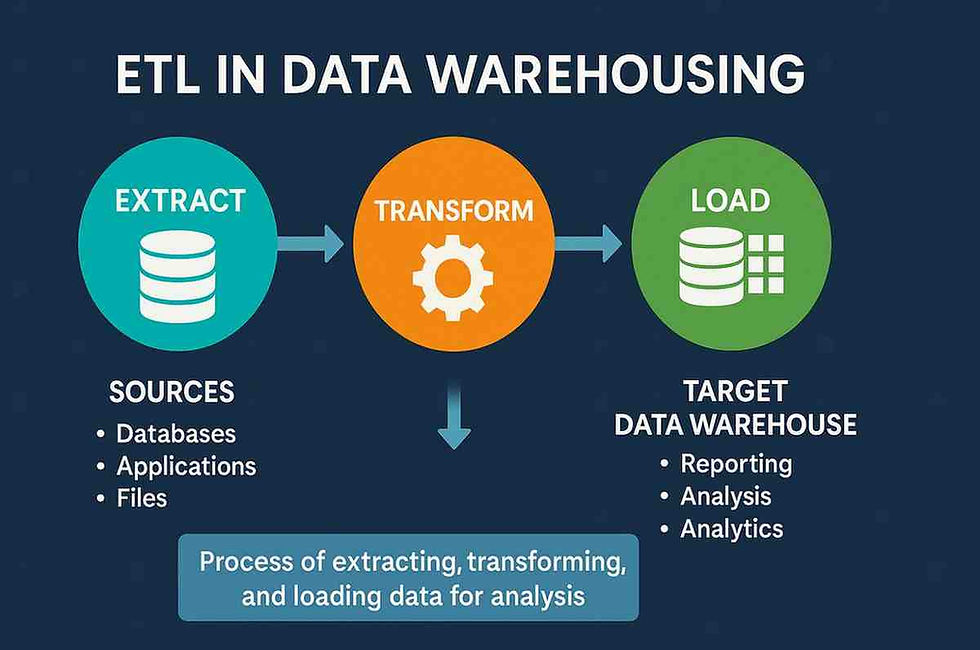Master Drop Down in Selenium: Guide for Web Automation Testing
- Gunashree RS
- May 31
- 6 min read
Handling dropdown elements is one of the most crucial skills every Selenium automation tester needs to master. Whether you're testing e-commerce sites, forms, or complex web applications, dropdowns appear everywhere and can make or break your test automation strategy. This comprehensive guide will walk you through everything you need to know about working with drop-downs in Selenium, from basic concepts to advanced techniques.

Understanding Drop-Down Elements in Web Testing
Drop-down menus, also known as select lists or combo boxes, are interactive HTML elements that allow users to choose from a predefined list of options. In web automation testing, these elements present unique challenges because they require specific handling methods different from regular clickable elements.
When working with drop-downs in Selenium, you'll encounter two main types:
HTML Select dropdowns - Traditional <select> elements with <option> tags
Custom dropdowns - JavaScript-based dropdowns that mimic select behavior
Understanding this distinction is crucial because each type requires different interaction approaches in your Selenium tests.
Setting Up Selenium for Dropdown Automation
Before diving into dropdown handling, ensure your Selenium environment is properly configured.
You'll need:
WebDriver Setup: Install the appropriate browser driver (ChromeDriver, GeckoDriver, etc.)
Selenium Libraries: Import necessary packages for your programming language
Test Framework: Set up TestNG, JUnit, or your preferred testing framework
Here's a basic setup example for Java:
import org.openqa.selenium.WebDriver;
import org.openqa.selenium.chrome.ChromeDriver;
import org.openqa.selenium.support.ui.Select;
import org.openqa.selenium.By;Working with HTML Select Dropdowns
HTML select dropdowns are the most straightforward type to handle in Selenium. The WebDriver provides a dedicated Select class that makes interaction intuitive and reliable.
Basic Select Operations
The Select class offers three primary methods for choosing options:
selectByVisibleText() - Select by the visible text displayed
selectByValue() - Select by the value attribute
selectByIndex() - Select by the position index (starting from 0)
Practical Examples
Let's explore each method with practical code examples:
Selecting by Visible Text:
WebElement dropdown = driver.findElement(By.id("country"));
Select select = new Select(dropdown);
select.selectByVisibleText("United States");Selecting by Value:
Select select = new Select(driver.findElement(By.id("country")));
select.selectByValue("US");Selecting by Index:
Select select = new Select(driver.findElement(By.id("country")));
select.selectByIndex(2); // Selects the third optionHandling Multi-Select Dropdowns
Multi-select dropdowns allow users to choose multiple options simultaneously. These require special handling techniques in Selenium automation.
Key Characteristics of Multi-Select
Users can select multiple options using Ctrl+Click
All selected options remain highlighted
Require different validation approaches
Multi-Select Operations
Working with multi-select dropdowns involves these essential operations:
Selecting Multiple Options:
Select multiSelect = new Select(driver.findElement(By.id("skills")));
multiSelect.selectByVisibleText("Java");
multiSelect.selectByVisibleText("Python");
multiSelect.selectByVisibleText("JavaScript");Deselecting Options:
multiSelect.deselectByVisibleText("Python");
multiSelect.deselectAll(); // Clears all selectionsValidating Selections:
List<WebElement> selectedOptions = multiSelect.getAllSelectedOptions();
for(WebElement option : selectedOptions) {
System.out.println("Selected: " + option.getText());
}Advanced Dropdown Handling Techniques
Modern web applications often use complex dropdown implementations that require advanced handling strategies.
Dynamic Dropdowns
Dynamic dropdowns populate their options based on user actions or external data. These require:
Wait Strategies: Implement explicit waits for options to load
Refresh Handling: Account for content changes during interaction
Error Recovery: Handle scenarios where expected options don't appear
Bootstrap and Custom Dropdowns
Many modern websites use custom dropdown implementations that don't use HTML select elements. These require different approaches:
Identify the Trigger Element: Usually a button or div that opens the dropdown
Wait for Options to Appear: Use explicit waits for dynamic content
Click the Desired Option: Locate and click the specific option element
Example approach:
// Click dropdown trigger
driver.findElement(By.className("dropdown-toggle")).click();
// Wait for options to appear
WebDriverWait wait = new WebDriverWait(driver, 10);
WebElement option = wait.until(ExpectedConditions.elementToBeClickable(
By.xpath("//li[text()='Desired Option']")));
// Click the option
option.click();Best Practices for Dropdown Testing
Implementing robust dropdown testing requires following established best practices that ensure reliable and maintainable test automation.
Validation Strategies
Always validate dropdown interactions to ensure your tests accurately reflect the user experience:
Verify Option Availability: Check that expected options exist before selection
Confirm Selection Success: Validate that the correct option was selected
Test Default Values: Ensure dropdowns display appropriate default selections
Error Handling
Implement comprehensive error handling for common dropdown issues:
StaleElementReferenceException: Refresh element references when the DOM changes
NoSuchElementException: Verify element existence before interaction
TimeoutException: Handle scenarios where dropdowns don't load as expected
Performance Optimization
Optimize your dropdown testing for better execution speed:
Use Appropriate Wait Strategies: Avoid unnecessary implicit waits
Cache Frequently Used Elements: Store dropdown references for reuse
Minimize Browser Interactions: Group related dropdown operations together
Troubleshooting Common Dropdown Issues
Even experienced testers encounter challenges when working with drop-downs in Selenium. Here are solutions to the most common problems.
Issue 1: Element Not Interactable
Problem: The Dropdown appears in the DOM, but clicking fails.
Solution: Ensure the element is visible and not covered by other elements
// Wait for the element to be clickable
WebDriverWait wait = new WebDriverWait(driver, 10);
WebElement dropdown = wait.until(ExpectedConditions.elementToBeClickable(By.id("dropdown")));Issue 2: Options Not Loading
Problem: The Dropdown opens, but the options don't appear
Solution: Implement proper wait conditions for dynamic content
// Wait for the specific option to be present
wait.until(ExpectedConditions.presenceOfElementLocated(
By.xpath("//option[text()='Expected Option']")));
Issue 3: Selection Not Persisting
Problem: Option appears selected but doesn't stick
Solution: Verify dropdown behavior and add confirmation steps
// Verify selection after choosing the option
Select select = new Select(dropdown);
select.selectByVisibleText("Option");
Assert.assertEquals("Option", select.getFirstSelectedOption().getText());FAQ Section
Q: What's the difference between selectByValue() and selectByVisibleText() in Selenium?
A: selectByValue() uses the HTML value attribute of the option element, while selectByVisibleText() uses the actual text displayed to users. selectByVisibleText() is generally more reliable for user-facing testing.
Q: How do I handle dropdowns that don't use HTML select elements?
A: Custom dropdowns require manual interaction - click the trigger element, wait for options to appear, then click the desired option using standard WebElement click() methods.
Q: Can I get all available options from a dropdown before making a selection?
A: Yes, use the getOptions() method from the Select class to retrieve all available options as a List<WebElement> for validation or iteration purposes.
Q: How do I handle dropdowns that load options dynamically via AJAX?
A: Implement explicit waits using WebDriverWait and ExpectedConditions to wait for specific options to become available before attempting selection.
Q: What should I do when the dropdown selection fails intermittently?
A: Add proper wait conditions, verify element visibility, check for overlapping elements, and implement retry mechanisms with appropriate exception handling.
Q: How can I verify if a dropdown is multi-select enabled?
A: Use the isMultiple() method from the Select class, which returns true for multi-select dropdowns and false for single-select dropdowns.
Q: Is it possible to deselect all options in a single-select dropdown?
A: No, single-select dropdowns always maintain one selected option. You can only change the selection to a different option, not clear all selections.
Q: How do I handle dropdowns inside iframes?
A: First, switch to the iframe context using driver.switchTo().frame(), then handle the dropdown normally, and switch back to default content when finished.
Conclusion
Mastering drop-down in Selenium requires understanding both technical implementation and practical testing strategies. From basic HTML select elements to complex custom dropdowns, each type presents unique challenges that require specific approaches. By following the techniques, best practices, and troubleshooting methods outlined in this guide, you'll be well-equipped to handle any dropdown scenario in your automation testing projects.
Remember that successful dropdown testing goes beyond mere selection - it involves comprehensive validation, robust error handling, and maintainable code practices. As web applications continue evolving, staying updated with new dropdown Implementations and testing techniques will ensure your automation skills remain sharp and effective.
Key Takeaways
• Master the Select Class: Understanding Selenium's Select class is fundamental for HTML dropdown automation
• Distinguish Dropdown Types: Recognize the difference between HTML select and custom dropdowns for appropriate handling
• Implement Proper Waits: Use explicit waits for dynamic dropdowns to ensure reliable test execution
• Validate Selections: Always verify that dropdown selections were successful to catch potential issues
• Handle Multiple Selection Types: Learn both single-select and multi-select dropdown techniques
• Practice Error Handling: Implement robust exception handling for common dropdown interaction failures
• Optimize Performance: Use efficient waiting strategies and element caching for faster test execution
• Test Edge Cases: Include validation for empty dropdowns, disabled options, and default selections
• Stay Framework Agnostic: Apply these principles across different programming languages and testing frameworks
• Document Your Approach: Maintain clear documentation of dropdown handling strategies for team consistency




Link INDOVIP138
indovip138
indovip138
indovip138
indovip138
indovip138
indovip138
indovip138
indovip138
indovip138
indovip138
indovip138
indovip138
indovip138
indovip138
indovip138
indovip138
indovip138
indovip138
indovip138
indovip138
indovip138
indovip138
indovip138
indovip138
indovip138
indovip138
indovip138
indovip138
indovip138
indovip138
indovip138
indovip138
Nekoliko puta sam pokušavao pronaći mjesto koje nudi pravu dozu zabave i uzbuđenja, a da pritom ostane fer i transparentno. Nakon dugog traženja, otkrio sam platformu koja me doista impresionirala svojim izborom i kvalitetom. Sve igre su dinamične i nepredvidive, što dodatno pojačava adrenalin. Najbolji dio je jednostavan pristup i brzina učitavanja, što mi je omogućilo da se u potpunosti fokusiram na samu igru. Ako želite isprobati nešto što će vas zaokupiti na duže vrijeme, svakako pogledajte slot sugar rush https://sugarrush.hr/. Tamo ćete pronaći pravi izazov za sebe.
geometry dash is a well-known and iconic fast-paced game where you guide a geometric shape toward the goal at the end of each level.